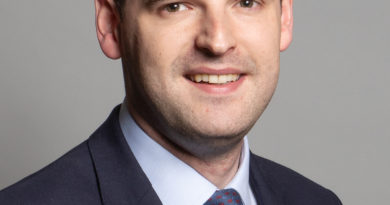Philip Dunne – 2014 Speech on Military Equipment
Below is the text of the speech made by Philip Dunne, the Defence Minister, in Farnborough on 4th February 2014.
Introduction
Ladies and Gentlemen.
It’s a great privilege to have been asked by General Gary (Coward) to give the keynote presentation here at the armoured vehicles conference.
This year’s conference is particularly important because 2014 is the year in which NATO allies complete their withdrawal from combat operations in Afghanistan.
I’ve seen it for myself.
In early January I visited Afghanistan and was pleased to meet the Chief of Staff of the Afghan National Army, General Karimi, and many of his senior colleagues in the Ministry of Defence.
His praise for the British military contribution to the improved security of his country and the sacrifices which have been made by UK and other coalition forces was most welcome.
I am particularly honoured today, to have the opportunity to welcome General Karimi to this conference and to host your visit Sir.
I would also like to pay my tribute to the growing strength and capability of the Afghan National Army and Security Forces, and the leading role the forces under your command, General, are taking and the sacrifices you are making in providing security to your own people.
I have seen it; it is happening on a daily basis; and you are to be congratulated on building an increasingly effective defence force over a short period.
While I was in your country I spent time with our forces, including the Defence Support Group readying vehicles for their return to the UK.
And this afternoon I’m going down to Marchwood on the south coast to witness the end result of their work this month, one hundred and twenty eight vehicles returning from operations.
The largest single consignment to date.
New challenges, agile investment
The withdrawal from active theatre after over a decade of continuous operations is welcome for our armed forces.
But as one vista closes a new horizon opens up NATO allies returning from Afghanistan are having to scan that horizon and reset their armoured vehicle requirements.
For a new era of contingent operations.
Military operations in the future are likely to face threats from both ‘traditional’ enemies, using sophisticated armoured vehicles themselves as well as asymmetric threats from insurgents or from warring rival factions.
We don’t know today where those future flash points might be.
We cannot assume we will be operating in another Basra or another Helmand against an insurgent threat.
That’s why we’re investing in the UK now for the future.
We’re investing in a range of capable vehicles that our army will need for that new world.
We’re investing in our research effort.
And we’re investing in our Reserves where we’re looking for an equally broad range of capabilities.
But there’s another factor.
If it is a new operational horizon it will also be one conditioned by the financial constraints that are a legacy of the economic crisis.
An environment in which many nations are facing an economic squeeze including in France as we’ve just heard where defence budgets are having to take their share of that squeeze and expensive military procurement programmes are having to justify their worth in these straightened times for the public finances.
So it’s doubly important that we make the best investment decisions that we can we must remain agile so that we can meet the needs of today as well as the long term.
Agility represented by bringing UORs into core
That’s why I was pleased at the end of last year to announce that almost every surviving protected mobility vehicle purchased with UOR funding would be transferred into our core programme.
Around 400 Mastiffs, 125 Wolfhounds and 160 Ridgbacks are returning from theatre with 400 Jackals, 70 Coyotes, 325 Huskies and 60 Warthogs.
A practical example of leveraging battle proven technology for the long term.
And you may care to tune in to ‘Top Gear’ in the near future to see one of these vehicles on the road, I challenged James May to take a Foxhound up to its top speed.
Those vehicles were part of a four year £300 million regeneration and support work package.
What’s involved?
Well, we’re doing things like bringing the vehicles up to the standards required for UK roads.
And converting them into the different roles necessary for the needs of the army going forward a topic which will be explored more fully tomorrow by General Sir Peter Wall our Chief of the General Staff.
Deliveries will begin this year to allow UK based units to start training on these vehicles.
Colonel John Ogden, Commander of our Armour Centre, will be speaking about that also tomorrow
Those deliveries will be good for the army.
And they’ll be good for British industry too.
But these converted vehicles are not just for today or next year.
They will provide the adaptability and flexibility that the British army will need until the next generation of armoured utility vehicles are introduced.
This is an example of agile investment writ large.
Backing an agile research base
Of course those UORs that played such a key role in keeping our troops one step ahead of the enemy were not just pulled off a shelf at will.
They relied on an innovative and agile research and on that best in class partnership between UK’s Defence Science and Technology Laboratory (DSTL) and industry.
I’m immensely proud of what that partnership delivered for us in Afghanistan.
For instance Morgan Advanced Materials Composites and Defence Systems from Coventry who developed techniques to enhance Mastiff’s survivability.
The development of the high survivability Foxhound vehicle by General Dynamics Force Protection Europe and Ricardo, in the Team Ocelot consortium.
And Amsafe from Bridport who developed innovative protection technologies against rocket propelled grenades, a system that is even now being installed on a number of vehicles in theatre and I understand, is exciting interest from several other nations.
I take my hat off to the ingenuity and commitment of those from Industry who worked the long hours with colleagues in the defence laboratories to deliver these and many other vital enhancements.
But UORs, critical though they were, are not the end of the story.
We’re investing research effort now for the longer term.
For example developing a generic armour mounting system which is all about creating a common interface between a vehicle and its armour.
Similar to the situation in weapons where our standard GPMG fits on all our vehicles. In this way we avoid having a different weapon type for each vehicle and can benefit for instance from commonality in ammunition.
And so, similarly, our aim is to develop armour that has wide applicability across a range of platforms.
It’s about making fitting, repairing and upgrading so much easier.
It’s about agile investment.
And it’s something I’m particularly proud of and it is an area where we are keen for allies to become involved in taking it to the next level.
My colleague Professor Bryn James will be saying more about that later today.
An affordable core programme
But this research effort is useful only in the context of a vibrant and affordable armoured vehicle programme.
That’s what we’ve got.
Thanks to the difficult decisions this government took in the [SDSR] in 2010 the army mounted equipment programme now stands at some £7.7 billion clearly spelt out for the next ten years.
And we expect to issue the next iteration of the EP very shortly.
So the incorporation of the Afghan UORs is certainly not the end of our investment in armoured vehicles capability!
Far from it.
Our 2010 SDSR confirmed the funding for a number of key armoured vehicle development and upgrade programmes which will support Army 2020.
These programmes, taken together, are known as the ‘Mounted close combat capability change programme’.
Investing now for the needs of tomorrow.
These vehicles will need to be modern, integrated and interdependent both to overcome adversaries as well as keeping up with the capability developments of our allies.
A demanding requirement.
But these are exciting times to be in the armoured vehicle business.
Look for instance at the Scout SV programme for a new ground armoured reconnaissance capability.
Under prime contactor General Dynamics UK this programme has passed several of its key milestones including the preliminary design review and live blast trials. These achievements have confirmed that the design meets the army’s needs, especially the high levels of protection needed for future combat operations.
The first production vehicles are expected to appear in a 2017 timeframe ready to start army user trials.
And we are anticipating an in service date of 2020.
Look also at the Warrior capability sustainment programme.
Good progress has been made here as well and prime contractor Lockhead Martin UK is expecting to undertake reliability trials in 2016/17.
These upgraded vehicles will be the cornerstone of the Armoured Infantry Brigade of the future.
Look too at our utility vehicle project which we intend will start to replace our current, battle hardened protected mobility vehicles, those Mastiffs, Wolfhounds and all the rest, during the early part of the next decade.
UK open for business
Before I leave the equipment programme, Brigadier General Beaudouin from the French would not forgive me if I failed to mention the 40mm case telescoped ammunition programme and the VBCI which the Prime Minister announced last week the UK would be testing to see whether it is a capability which meets the British army’s requirements.
Working with our French allies has lead to an efficient and cost effective solution for a common cannon for our Scout and Warrior programmes that I’ve just mentioned.
It will give both our nations a class leading capability that will allow this class of platform to maintain its battle winning firepower for many years to come.
I am particularly pleased with this project, as the Ministerial lead on the procurement aspects of our growing Anglo/French cooperation which formed a central part of the summit meeting between our Prime Minister and the President of France last Friday.
A good example of the UK and its close partners benefiting from cutting edge technology and value for money.
And a fine example of Great Britain being a great international partner and a great place to invest.
Conclusion
So in conclusion ladies and gentlemen.
The UK’s armoured vehicle programme is in good shape.
It’s a programme that balances the needs of today with those of tomorrow.
And it’s a good time for industry to roll up its sleeves and invest.
For an army increasingly based on contingency.
And from the end of this year an army no longer on long standing operations.
But it’s equally important to realise that those solutions must be cost effective.
That’s my challenge to you.
I know it’s possible.
Just look at the superb response to UORs delivered by industry to recent theatres of operation.
So do use the next couple of days to network, to make new contacts and be part of the next phase of the armoured vehicle story.
Thank you.


